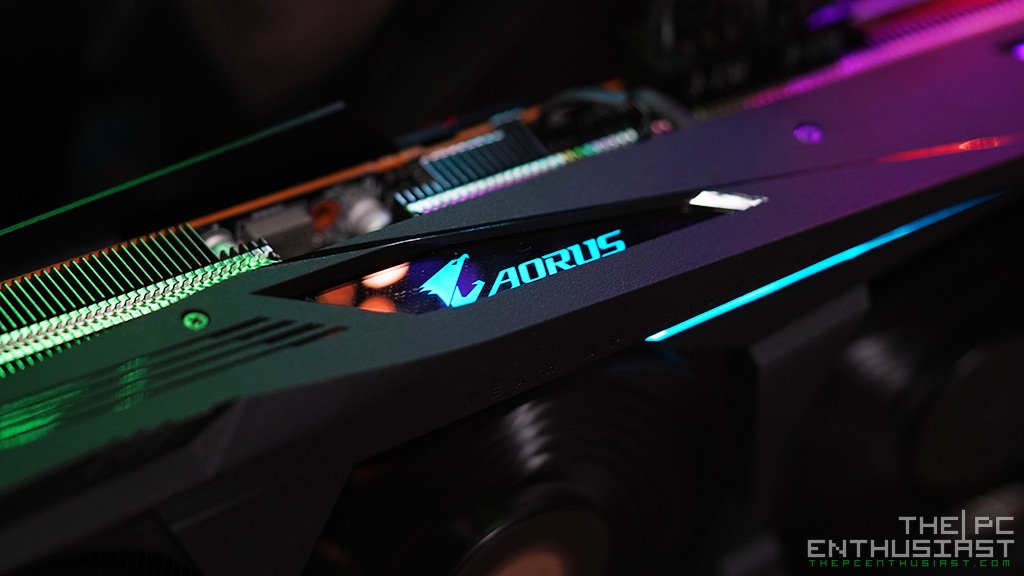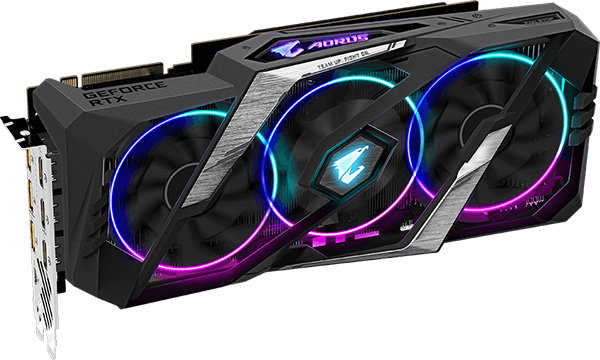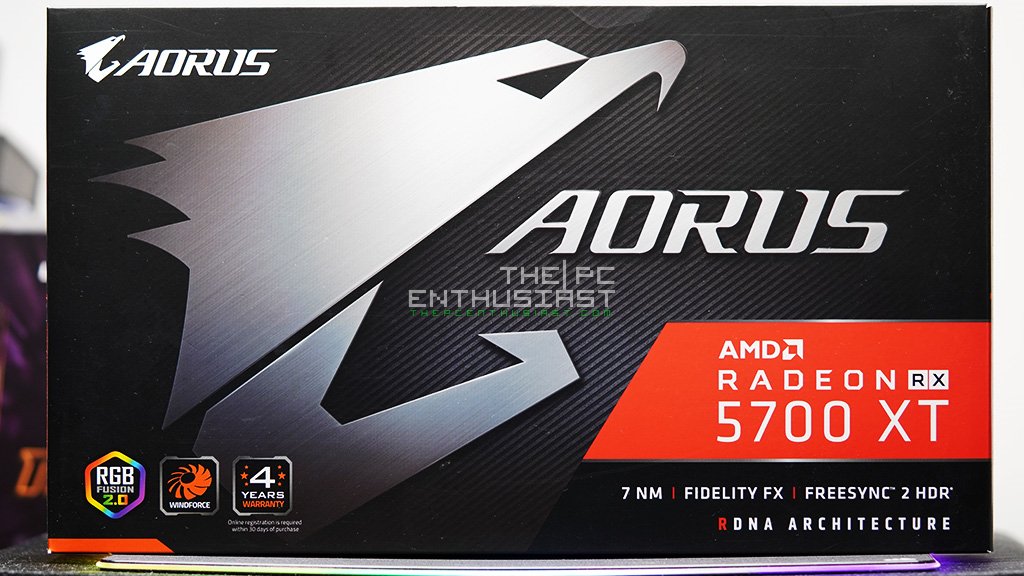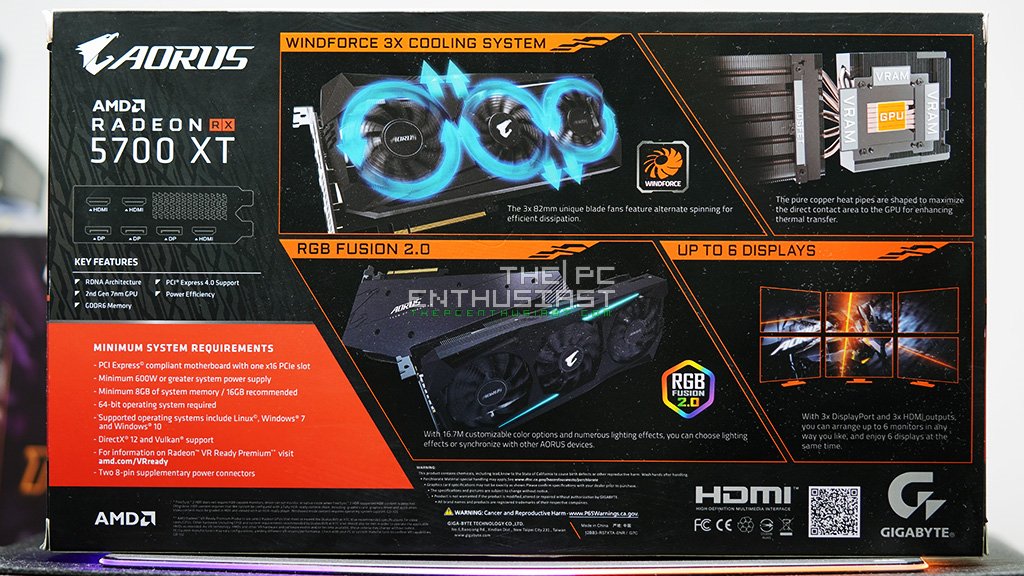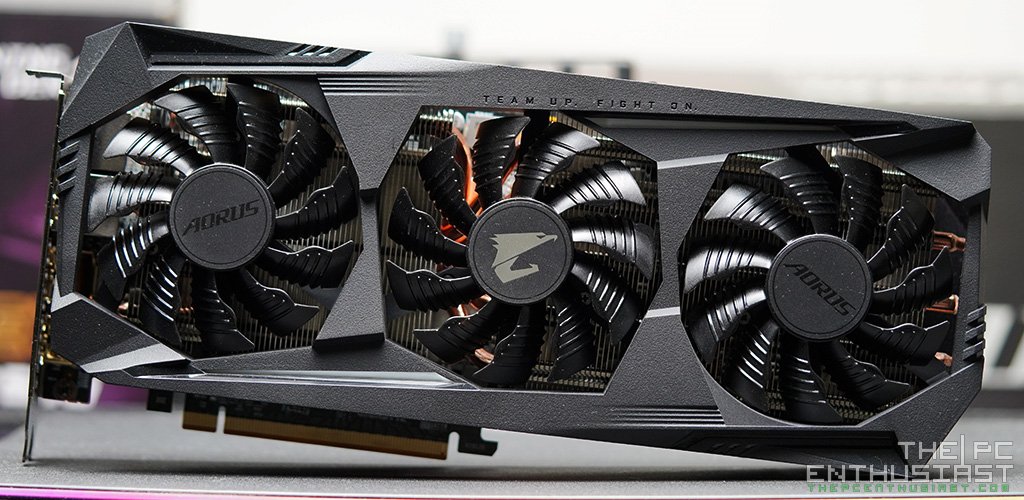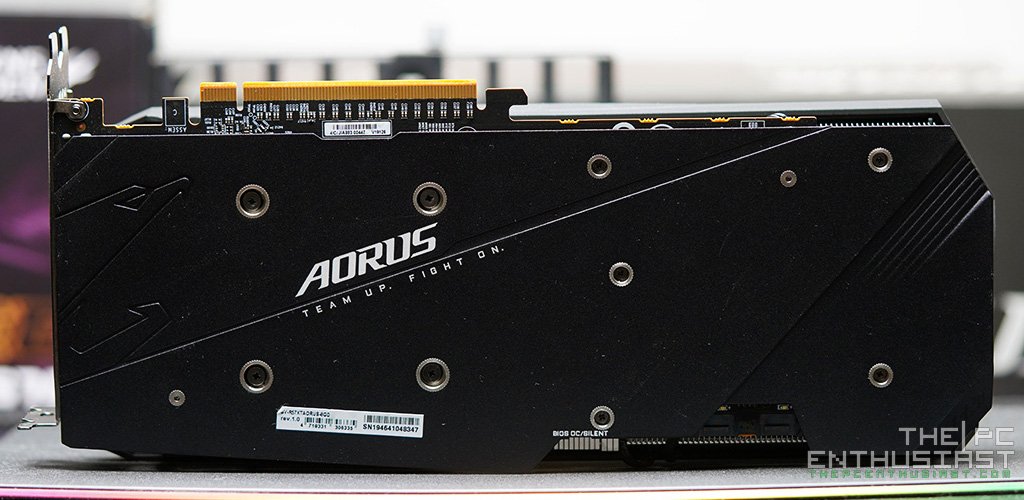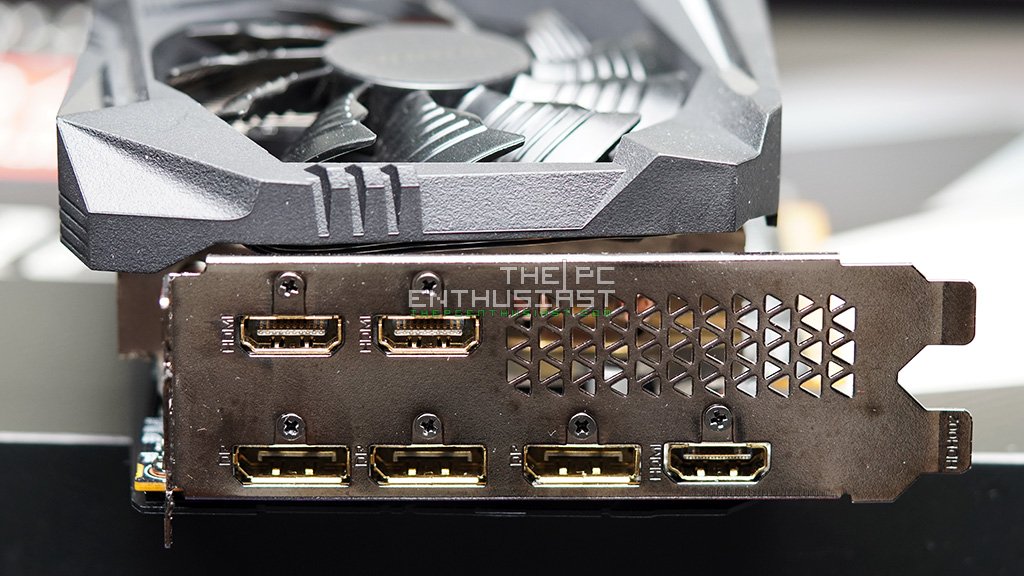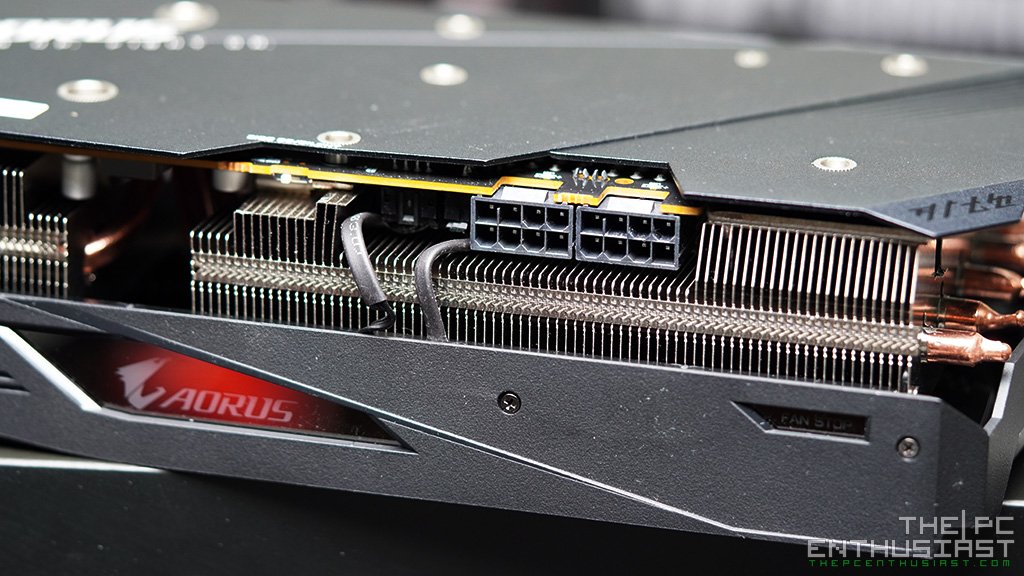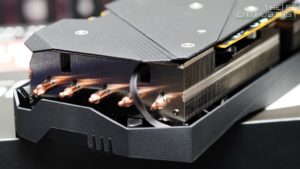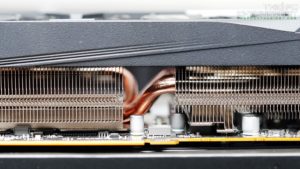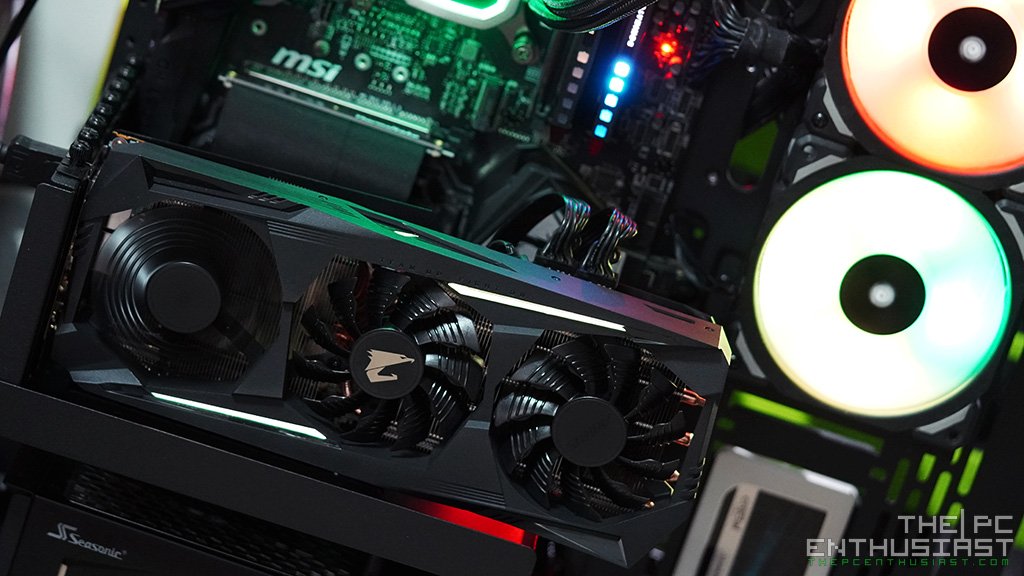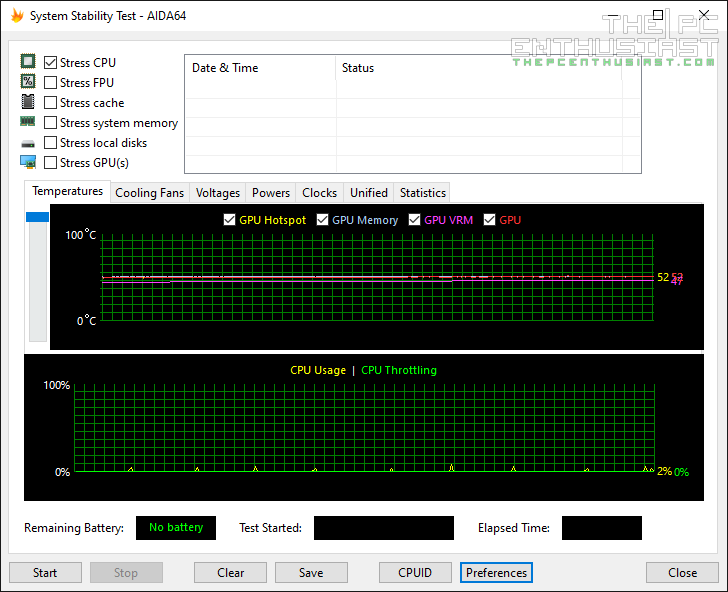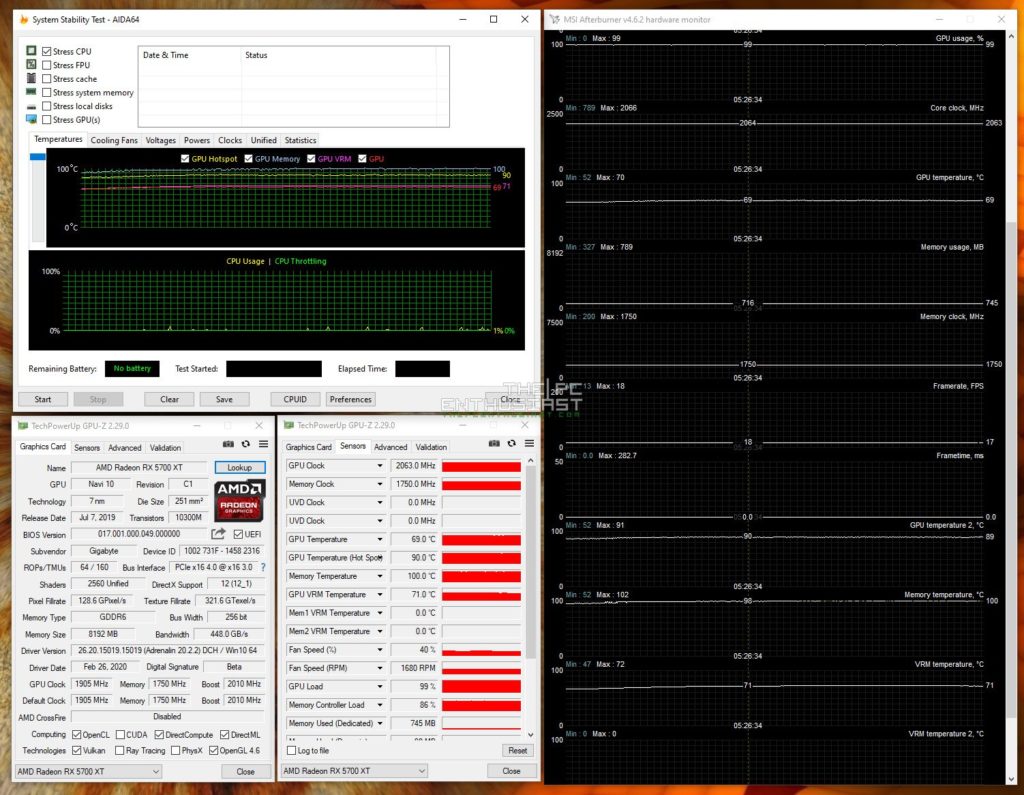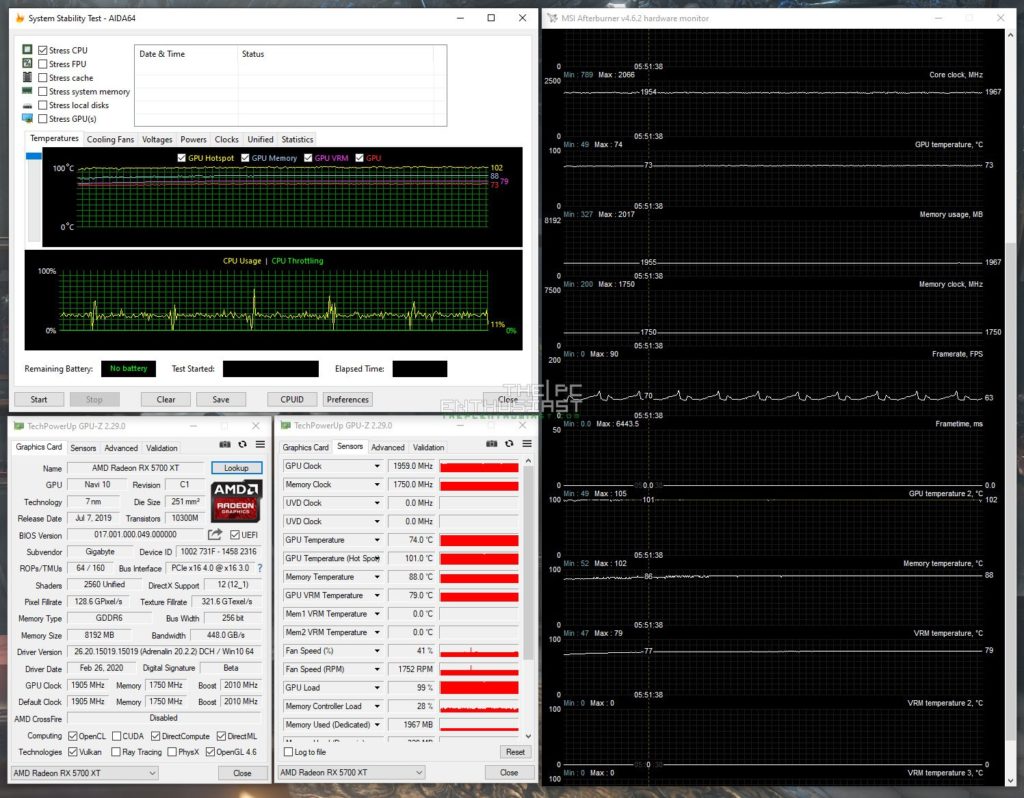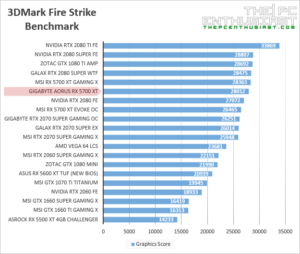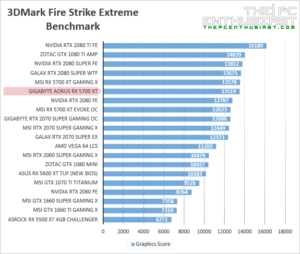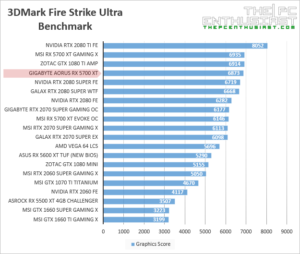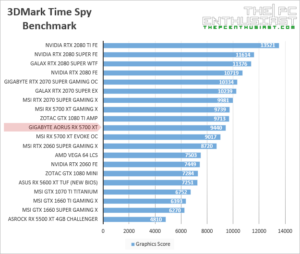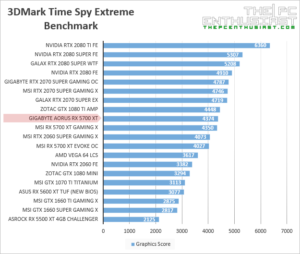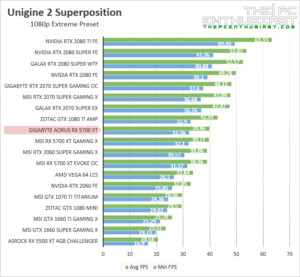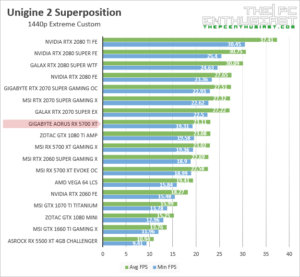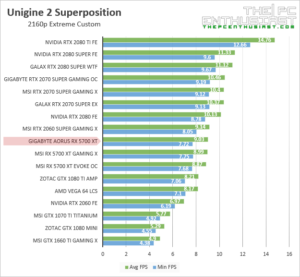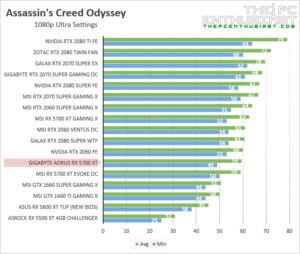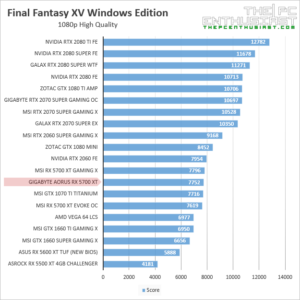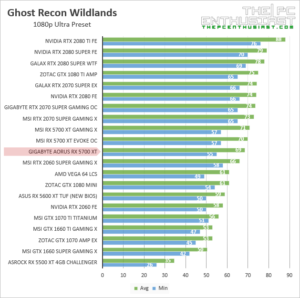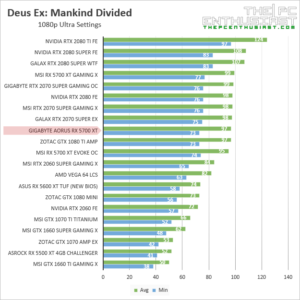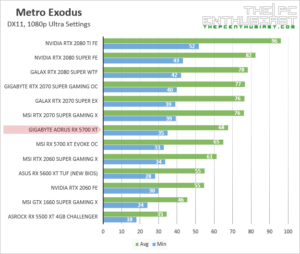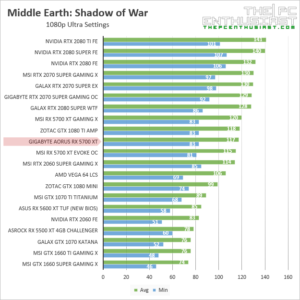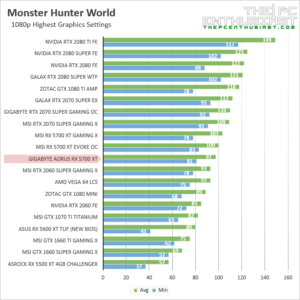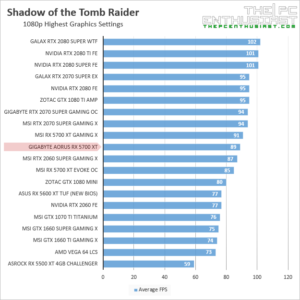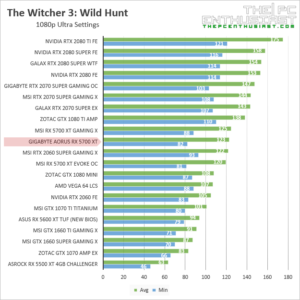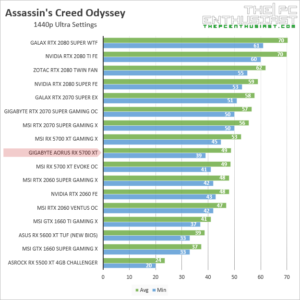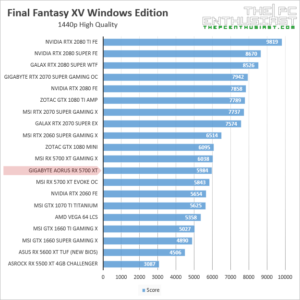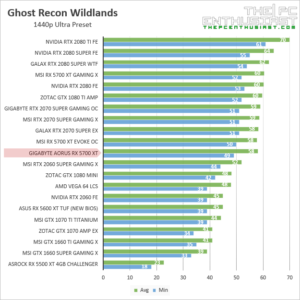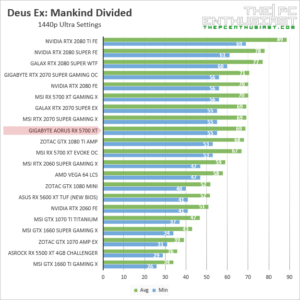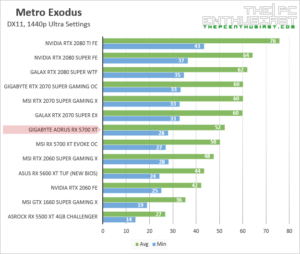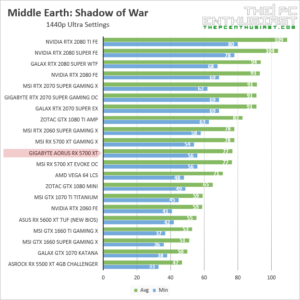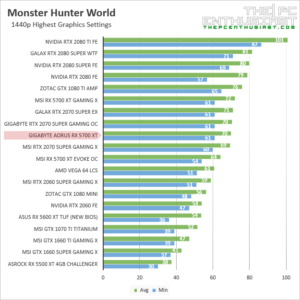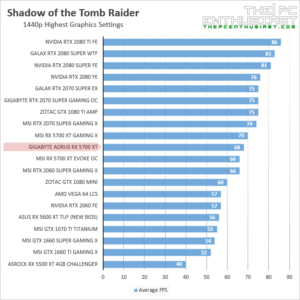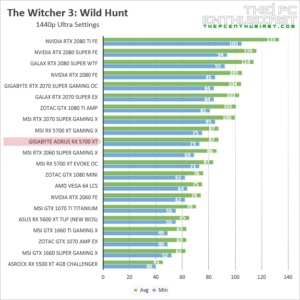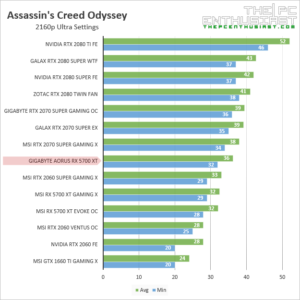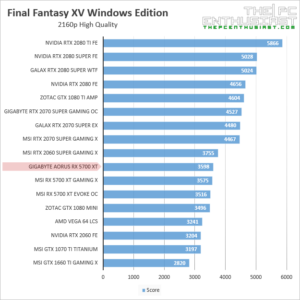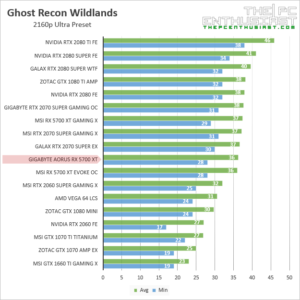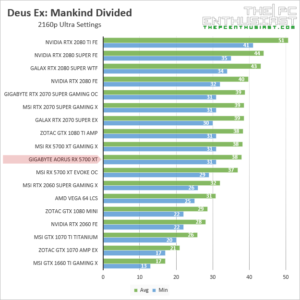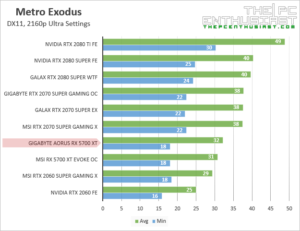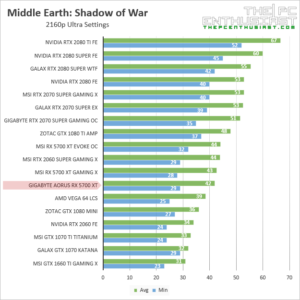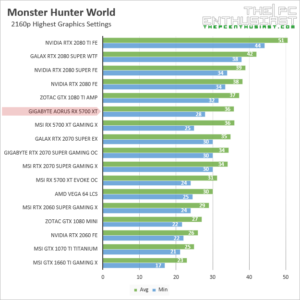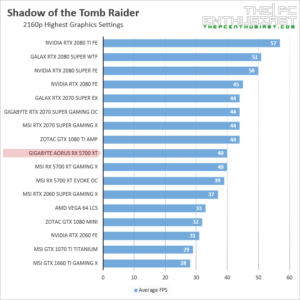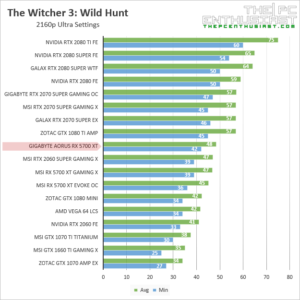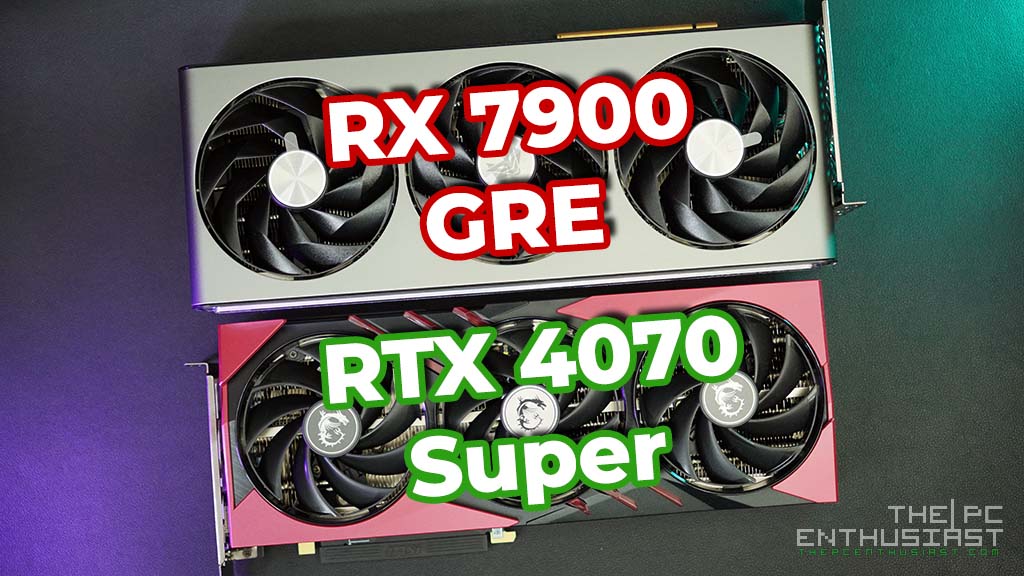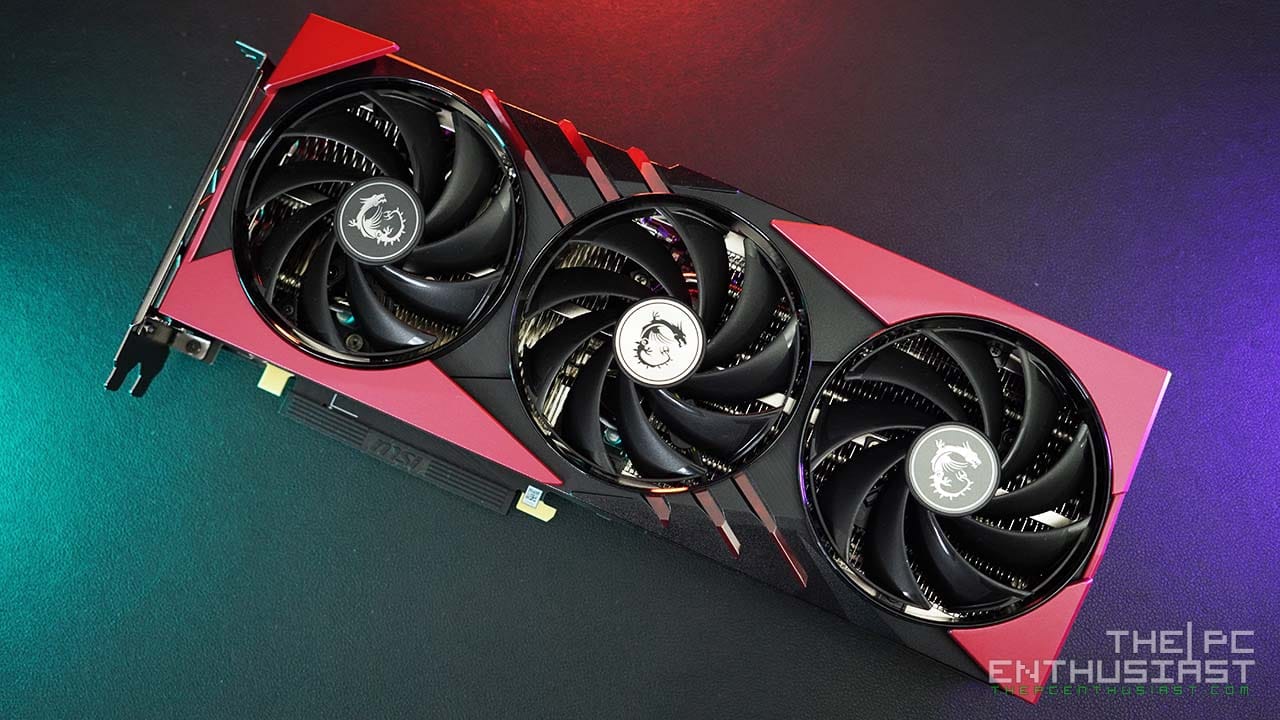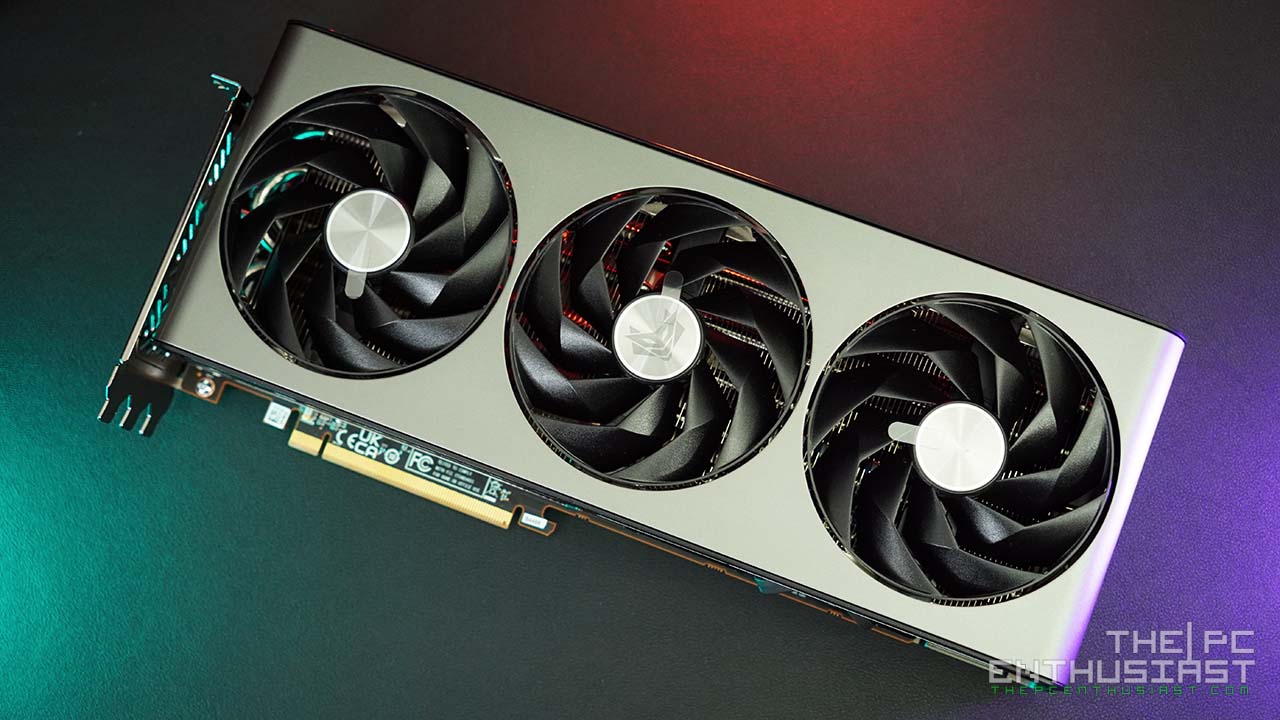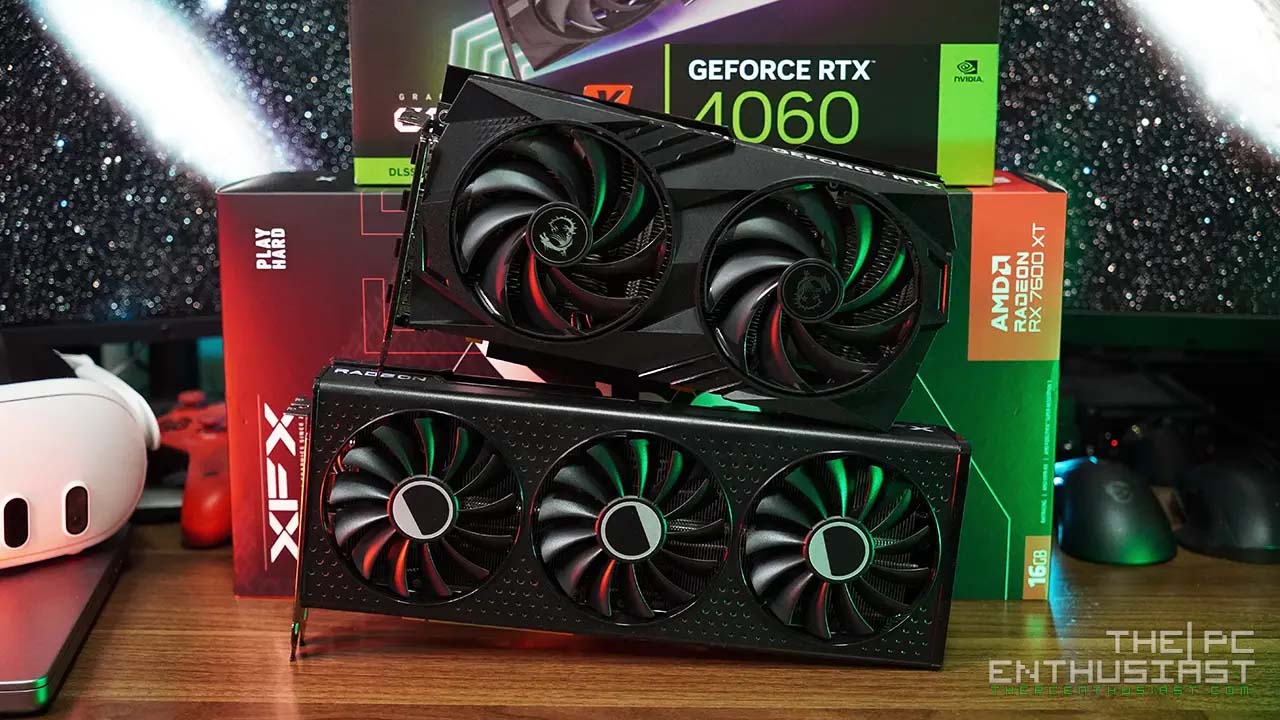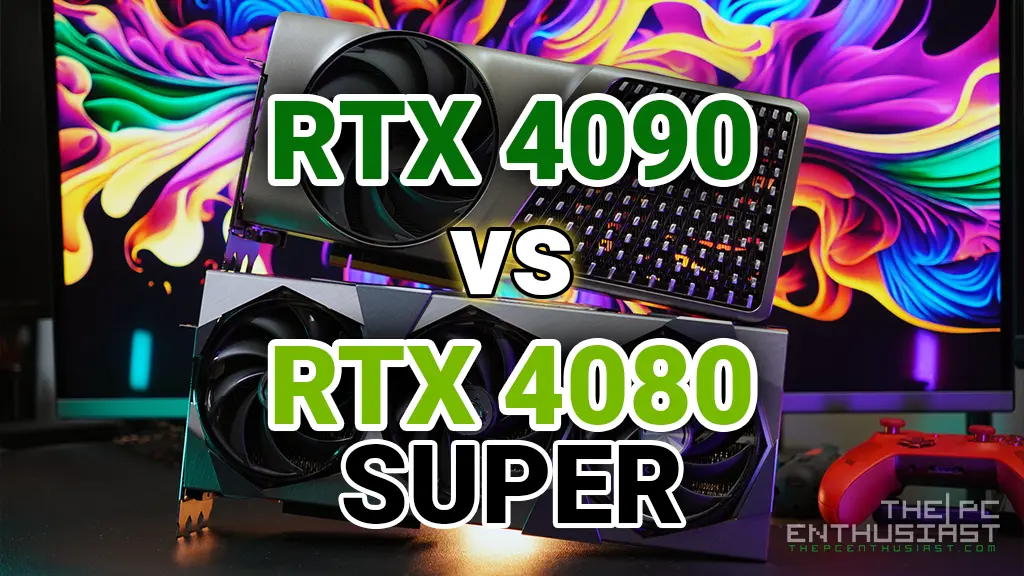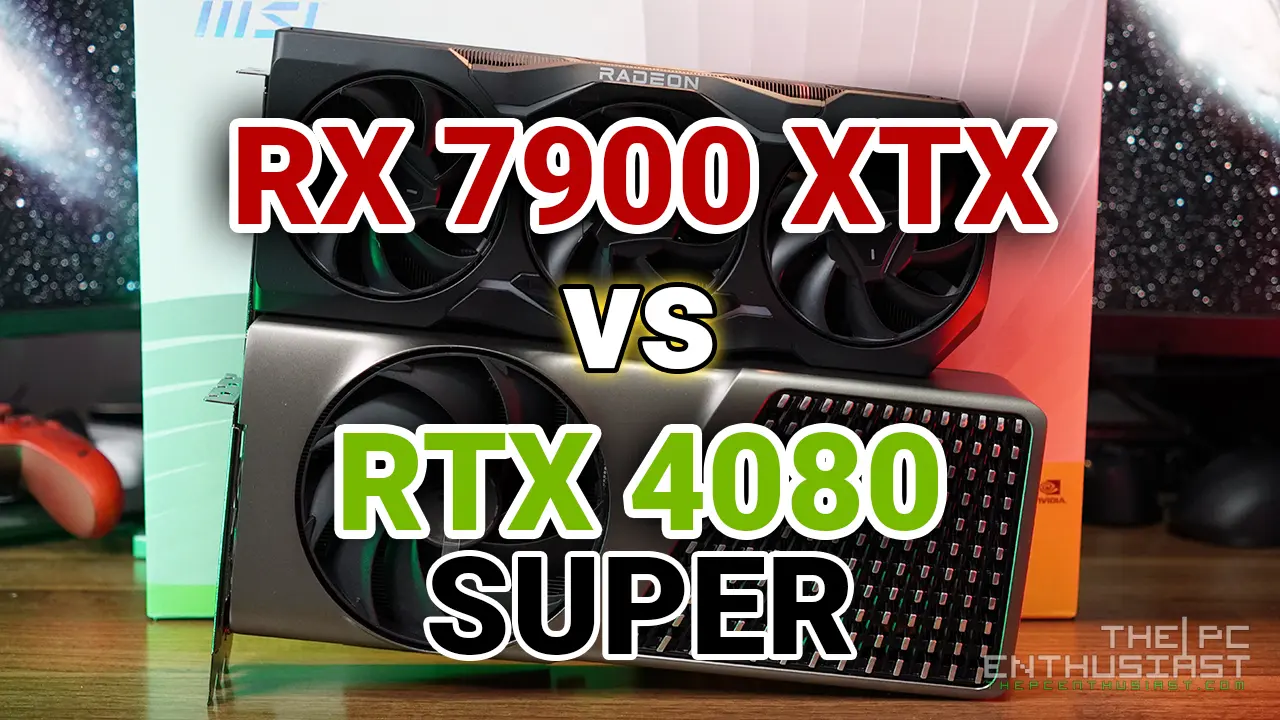Today we are going to check out another Radeon RX 5700 XT graphics card. We have here the AORUS Radeon RX 5700 XT 8G from Gigabyte. It’s the company’s fastest RX 5700 XT, followed by the Gigabyte RX 5700 XT Gaming OC. It features a higher boost clock speed of up to 2010MHz, a sleek-looking design, WindForce 3X cooling system and RGB Fusion 2.0. If you are in the market looking for a better RX 5700 XT graphics card, please continue reading our Aorus RX 5700 XT 8G review below.
Gigabyte AORUS Radeon RX 5700 XT 8G Graphics Card Review
The Radeon RX 5700 XT is currently AMD’s top of the line Navi GPU for gaming. It’s based on a 7nm fabrication process and features AMD’s RDNA gaming architecture. It has 40 Compute Units and 2560 Stream Processors. The reference RX 5700 XT has a base clock speed of 1605 MHz and a boost clock speed of up to 1905 MHz. The AORUS RX 5700 XT features a higher base clock speed of 1770 MHz and a higher boost clock speed of up to 2010 MHz. An 8GB GDDR6 memory running at a clock speed of 14Gbps also makes this graphics card suitable for higher resolution.
AMD is claiming that the RX 5700 XT is the best GPU for 1440p gaming. Aside from the RDNA architecture, it also comes with features like Radeon Image Sharpening (RIS); FidelityFX; Radeon Anti-Lag; and support for PCIe 4.0 interface. Unfortunately, this generation of AMD GPUs doesn’t have any ray-tracing capabilities. I’ve previously written an article regarding the RX 5700 XT and RX 5700 features here. You can learn more from there.
The Aorus RX 5700 XT 8G is like a beefed-up version of the Gigabyte RX 5700 XT Gaming OC. It features a slightly higher clock speed and features a sleek-looking design. I personally like the design and aesthetics of the Aorus version compared to the Gigabyte Gaming variant. However, comparing the Aorus Radeon RX variant to the Aorus GeForce RTX graphics card; I think it’s a bit underwhelming or the company might have been a little bit conservative when it comes to the Aorus RX 5700 XT.
For example, just look at the Aorus RTX 2070 Super; compared to how the Aorus RX 5700 XT look like; the latter seems a bit toned-down or simplified. There are no “rings” RGB lighting on the Aorus RX 5700 XT, and the Aorus GeForce RTX has a more aggressive vibe to it. Nevertheless, the Aorus RX 5700 XT also feels premium in its own way. It’s not just as flashy compared to the Aorus RTX variant. Perhaps, Gigabyte doesn’t want to unnecessarily increase the price due to the design as well. Anyway, this is just me nitpicking on the design. The more important thing here is the performance of this graphics cards.
Moving on, the Aorus RX 7500 XT features Gigabyte’s Windforce 3X cooling system with alternate spinning fans. And by that, I mean the middle fan rotates at the opposite direction. The said “alternate spinning” solution is to reduce the air turbulence and enhance the airflow pressure. The Aorus variant also has a dual-BIOS setup; and a BIOS switch for OC mode and silent mode.
RGB lighting is also present and it features Gigabyte’s RGB Fusion 2.0. The RGB lighting on this graphics card is rather subtle. RGB lighting is only present on the Aorus logo on the middle-side and two lines on the cooler shroud. Now, let’s take a closer look at the Aorus RX 5700 XT itself after the specifications table below.
AORUS Radeon RX 5700 XT 8G Specifications
| Aorus RX 5700 XT | Gigabyte RX 5700 XT Gaming OC | AMD Radeon RX 5700 XT | |
|---|---|---|---|
| GPU Core | NAVI 10 XT | NAVI 10 XT | NAVI 10 XT |
| Process Technology | 7nm | 7nm | 7nm |
| Transistor Count | 10.3 B | 10.3 B | 10.3 B |
| Compute Units | 40 | 40 | 40 |
| Stream Processors | 2560 | 2560 | 2560 |
| Texture Units | 160 | 160 | 160 |
| ROPs | 64 | 64 | 64 |
| Base Clock | 1770 MHz | 1650 MHz | 1605 MHz |
| Game Clock | 1905 MHz | 1795 MHz | 1755 MHz |
| Boost Clock | 2010 MHz | 1905 MHz | up to 1905 MHz |
| Memory Size / Type | 8GB GDDR6 | 8GB GDDR6 | 8GB GDDR6 |
| Memory Clock | 14 Gbps | 14 Gbps | 14 Gbps |
| Memory Bus Width | 256-bit | 256-bit | 256-bit |
| Memory Bandwidth | 448 GB/s | 448 GB/s | 448 GB/s |
| Card Bus | PCI-E 4.0 x 16 | PCI-E 4.0 x 16 | PCI-E 4.0 x 16 |
| TDP | 225W | 225W | 225W |
| Power Connectors | 8+8 pin | 8+6 pin | 8+6 pin |
| Recommended PSU | 600 W | 600 W | 600 W |
| Dimensions | 290mm x 123mm x 58mm | 279.85mm x 114.35mm x 49.55mm |
Aorus RX 5700 XT 8G latest pricing and availability:
For US: Available on Amazon.com here, Newegg.com here
For UK: Available on Amazon UK here
Packaging and Closer Look
The Aorus RX 5700 XT came in a black box with red accent. It’s an AMD Radeon graphics card, so expect to see that big bright red label on the sides. There’s a big AORUS logo on the front and you can read some of the features and specs of the graphics card at the back of the box.
Above you can see the front cooler shroud of the graphics card and the metal back plate on the other side. I prefer this design and aesthetics compared to Gigabyte’s Gaming OC graphics cards. It’s simply much better, sleek-looking, not really aggressive, but still has that nice look to it.
The RGB lighting on this graphics card is subtle as well. There are two lines or stripes on the cooler shroud with RGB lighting. The Aorus logo and the Fan Stop indicator on the side of the graphics card have RGB lighting as well. There is no lighting at the back plate area; just a simply AROUS “Team Up. Fight On.” text, an engraved eagle logo and some geometric lines for added aesthetics.
The Aorus RX 5700 XT has an excessive amount of output ports in my opinion. It has three DisplayPort and three HDMI output ports. According to Gigabyte you can combine up to 6 displays into a single large desktop or customize the display depending on your need.
I’m not sure if this would be something beneficial for gaming purposes. I mean, 6 displays at the same time would put a huge amount of load on the graphics card already. Even 3 monitors would be challenging to drive for an RX 5700 XT in gaming. However, for desktop operation, productivity or work-related activities, I think this graphics card is capable of driving up to 6 displays at the same time.
The Aorus RX 5700 XT also requires two 8-pin PCIE power connector and at least a 600W power supply. I recommend that you get a true rated 80 Plus certified PSU in case you don’t have a PSU yet. There are a lot of (really) good power supplies from companies like Corsair, Seasonic and many more.
The BIOS switch selector is located just a few centimeters to the left of the power connectors, just above the Aorus logo. But honestly, I’d keep it at OC mode all the time.
There are two blocks of aluminum heatsinks underneath the cooler shroud. There are also 6 copper heat pipes that distributes the heat from the GPU to the aluminum heatsinks. Gigabyte uses a heat pipe direct touch approach in this graphics card. Meaning that the heat pipes directly touches the GPU chip, and distributes heat from there.
There are two metal plates that are connected directly to the aluminum heatsink. This is for cooling the eight GDDR6 memory chips and the MOFETs. Thermal pads are used to transfer the heat from the VRM and MOFETs to the metal plates. There are also thermal pads on the other side of the PCB to transfer heat from the PCB to the back plate.
Test Setup for Aorus RX 5700 XT
I tested Gigabyte’s AORUS RX 5700 XT 8G on an MSI MEG Z390 ACE motherboard powered with an Intel Core i7-8700K overclocked to 4.9GHz. The rest of the specifications of the system are as follows:
Operating System: Windows 10 Pro 64bit ver. 1903
Motherboard: MSI MEG Z390 ACE
Processor: Intel Core i7-8700K
CPU Cooler: Corsair H100i RGB Platinum AIO
Memory: Corsair Dominator Platinum RGB DDR4-3200 16GB
Graphics card: AORUS Radeon RX 5700 XT 8G
Storage Drives: Samsung 970 EVO Plus NVMe SSD, Crucial MX500 2TB
Power Supply: Seasonic 850W Prime Titanium
Chassis: Thermaltake Core P3
I am also using the Radeon Software Adrenalin 2020 edition 20.2.2 for Windows 10 64bit. The graphics card was tested in three gaming resolutions – 1920×1080 FHD, 2560×1440 WQHD and 3840×2160 4K UHD. The RX 5700 XT is intended for 1440p gaming, so let’s see how good this graphics card is at that resolution.
For the synthetic benchmarks, I used the benchmark tools from 3DMark and Unigine. I also used the following games to test the Aorus RX 5700 XT graphics card: Assassin’s Creed Odyssey, Deus Ex: Mankind Divided, Final Fantasy XV Windows Edition, Ghost Recon: Wildlands, Middle Earth Shadow of War, Monster Hunter World, Shadow of the Tomb Raider, and The Witcher 3 Wild Hunt.
Below are the GPUz and GPGPU screenshots of the AORUS RX 5700 XT 8G:
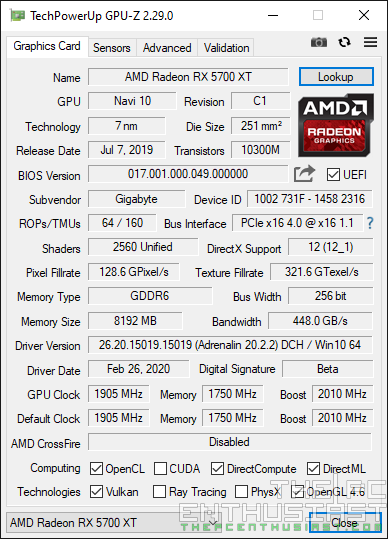
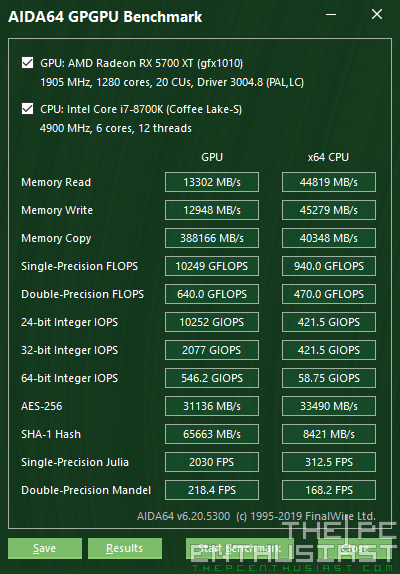
Aorus RX 5700 XT Noise and Temperature
During idle to light load situations, the fans on the Aorus RX 5700 XT do not spin. So, don’t worry, there’s nothing wrong with the graphics card. In this state, the GPU is cooled passively; and we can see that the GPU and VRAM temperatures plays around 52° Celsius. The graphics card is dead silent as well since there are no fans running at this state.
For the full load temperature, I tested the Aorus RX 5700 XT using FurMark like I always do in my graphics card reviews. However, I noticed that the GPU memory was playing around 100° Celsius already; a bit worrying if you ask me. GPU hotspot is also around 90° Celsius; but the GPU and VRM temperatures are only at around 69° and 71° respectively. That’s not bad at all for GPU and VRM temperatures. The fans were running at around 1700 RPMs as well.
I decided to test the graphics card’s temperature again, this time using 3DMark Time Spy on a loop. I was a bit surprised to see the changes in the temperature readings. This time the GPU hotspot went up to 102°, while the VRAM went down to 88° Celsius. The GPU and VRAM temperature also went up a bit; with the GPU now hovering at 73° and VRAM at 79° Celsius. Those are still pretty much acceptable temperatures.
When it comes to noise, the fans were running at around 1700 RPMs in both FurMark and 3DMark tests. And I’m glad to report that the Aorus RX 5700 XT remained (very) silent during these tests. The fans would only become audible if you manually increase the fan speed to 80%~100%. But I don’t think it is necessary to increase the fan speed to 100%. I found that around 55% to 60% fan speed is a good balance between noise and cooling performance.
Now let’s see some benchmark results…
Aorus RX 5700 XT Synthetic Benchmarks
Let’s see some synthetic benchmarks first. Some of you might not be interested in synthetic benchmarks, but there are others who would like to see them. This also gives us an idea on how the Aorus RX 5700 XT generally performs and how it fares with other graphics cards using the same controlled tests.
For the synthetic benchmark results, I include 3DMark Fire Strike, 3DMark Fire Strike Extreme, 3DMark Fire Strike Ultra, 3DMark Time Spy and 3DMark Time Spy Extreme. I also included Unigine’s Superposition benchmark test. Below are the results I got:
We can see from the benchmark results that the Aorus RX 5700 XT trade blows with the MSI RX 5700 XT Gaming X. There difference isn’t really that huge, so the performance is what we should expect from an RX 5700 XT.
Notice also that the RTX 2070 Super is relatively faster than the RX 5700 XT when it comes to Time Spy (Extreme) and Superposition tests. However, the Aorus RX 5700 XT outperforms the RTX 2070 Super and even the RTX 2080 FE on Fire Strike tests.
Aorus RX 5700 XT 1080p Game Benchmarks
1080p resolution isn’t really the target of the RX 5700 XT; but if it’s 1080p high refresh rate, then that would be a different story. You might want the extra power that an RX 5700 XT can provide if you are using a high refresh rate monitor. Below are the results I got with the Aorus RX 5700 XT on a 1920×1080 resolution at ultra or highest graphics quality settings.
Again, we see the same trend were the RX 5700 XT trade blows with the other RX 5700 XT graphics cards. It’s a bit slower than the RX 2070 Super generally speaking. But it is also a bit faster than an RTX 2060 Super in most cases as well.
Aorus RX 5700 XT 1440p Game Benchmarks
1440p is the target resolution of the Radeon RX 5700 XT. After all, AMD dubbed it as the best 1440p gaming GPU. So, let’s see how good the Aorus RX 5700 XT performs on a 2560×1440 resolution. Below are the results I got for this graphics card:
We see a similar trend here where the RX 5700 XT generally performs in between an RTX 2070 Super and an RTX 2060 Super. The RX 5700 XT also seems to drive most of the games above 60 fps on average on ultra or highest graphics quality. That’s not bad, you still get a smooth gameplay.
However, if you are using a 1440p 144Hz or 165Hz high refresh rate monitor; I think you will need to tone down the graphics quality to achieve higher frame rates. Depending on how graphics intensive the game is, setting it to high graphics quality or disabling certain aspects of the visual effects will help improve the frame rate.
Aorus RX 5700 XT 2160p Game Benchmarks
At 4K UHD, it is not ideal to use a Radeon RX 5700 XT graphics card to play at this resolution. AMD doesn’t have any gaming graphics card for 4K yet. We are still waiting “Big Navi” for that. But just to give you an idea how the Aorus RX 5700 XT performs in this resolution, below are the results I got:
You have seen the results above; it’s not the worst actually. You can still play games at 4K with an RX 5700 XT; provided that you (significantly) tone down the graphics quality.
Pricing and Availability
Gigabyte’s AORUS Radeon RX 5700 XT 8G is now available. Gigabyte is also offering 4 years warranty for the said graphics card. But you do need to register the graphics card on Gigabyte’s site to get that 4-year warranty. Otherwise, you only get a 3-year warranty.
I’m not sure what was the original MSRP of this graphics card; I think it was around $440~$450 USD. But since it has been in the market for a few months now, perhaps its retail price may have adjusted already. For the latest pricing and availability, you can check them out via the links below:
Aorus RX 5700 XT 8G latest pricing and availability:
For US: Available on Amazon.com here, Newegg.com here
For UK: Available on Amazon UK here
AORUS RX 5700 XT 8G Review Conclusion
So, there you have it! Based on our testing, it looks like Gigabyte has done a great job with their Aorus RX 5700 XT 8G graphics card. Aesthetically speaking, it looks really nice and has that premium feel to it. It doesn’t have a very aggressive design and the RGB lighting isn’t that “screaming” at all. I think it would fit or blend well in all sorts of builds just fine.
I don’t have any real issues with this graphics card and I also didn’t encounter any (weird) bugs or issues with the driver that I used. My only real concern is that the VRAM, and GPU hotspot, temperatures were a bit high. Considering that the Aorus RX 5700 XT draws power from two 8-pin PCI power connectors; I think it consumes more power compared to the Gigabyte Gaming (OC) variant or a reference design. Thus, it outputs a (bit) higher temperature, resulting to higher temperature readings.
Well, the tradeoff there is that you do get higher clock speeds that translate to a slightly higher performance. Also, compared to the Gigabyte RX 5700 XT Gaming OC, the Aorus variant has a bit of a premium price. Personally, I prefer how the Aorus looks; so, I wouldn’t mind paying a few more for the design. But if you want to save around ~$20, the Gigabyte Radeon RX 5700 XT Gaming OC isn’t a bad choice either.
In addition, I would like to point out that the Gigabyte Gaming OC doesn’t have a dual-BIOS feature. Only the Aorus RX 5700 XT has a dual-BIOS feature. It’s another feature that you might want to consider aside from the aesthetics, RGB lighting, and higher clock speeds.
Finally, the Aorus Radeon RX 5700 XT 8G is an excellent graphics card. I don’t have any problems recommending this one; definitely check this model if you are planning to get an RX 5700 XT for your gaming machine.

